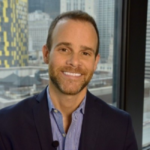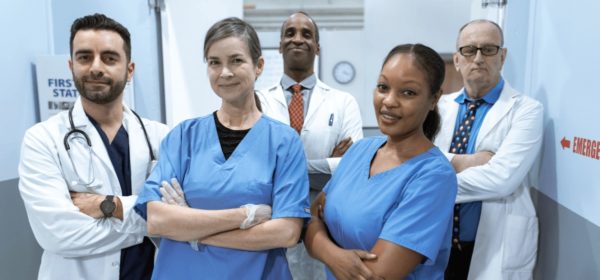Albert Einstein once said, “love is the most powerful force there is, because it has no limits.” Dr. Peter Pronovost, Chief Quality and Clinical Transformation Officer at University Hospitals in northeastern Ohio agrees. Four years ago, Dr. Pronovost was eager to transform healthcare and he decided to lead with love and so far, the results are astounding. Pronovost shared his model of transformation story at our recent GDS Healthcare Summit but first he set the stage to reveal why transformation in healthcare is so desperately needed.
The Trillion Dollar Problem
University Health Systems is a 6-billion-dollar health system with 23 hospitals, 75 office buildings, several ambulatory surgeries and serves about 630-thousand people. As Dr. Pronovost quickly pointed out, the urgent need for transformation in healthcare was clear, “over 50% of health systems now have negative margins, hundreds have gone bankrupt this year and more are on their way. 50% of nurses have less than 2 years’ experience, because of few nurses there are often ratios that are unsafe, where we haven’t leveraged technology.”
“Across the board healthcare costs have gone up 20% but our revenues have gone to 1.5% to 2% as some payers have cancelled them. Burnout is at an all-time high, so there’s never been a time that the need for transformation has been greater.”
-Dr. Peter Pronovost, University Hospitals
Before Dr. Pronovost shared his model of transformation and how he led with love, he shared the stories of two patients and compared how those journeys differed pre and post transformation.
Patient #1: Helen (Pre-Transformation)
Helen is 64 years old and was admitted to University Hospitals 14 times from 2018 to 2019 for heart failure. She was admitted to the ED 15 times. As Dr. Pronovost explained, Helen received great reactive and transactional care but added, “what we missed was relational care because nobody identified the main reason Helen came back was due to anxiety, she would get nervous and short of breath and wind up coming back in but she wasn’t even diagnosed with that and she missed most of her appointments because her daughter had died of a narcotic overdose and was caring for her disabled granddaughter and didn’t have respite care.”
Helen cost the health system $1.4 million dollars and Dr. Pronovost said most of that cost was waste, it didn’t need to happen, but back in 2019 they couldn’t see the defects in Helen’s journey, and he needed to find a way to make them visible.
Patient #2: Rose (Post-Transformation)
Rose is also a 64-year-old patient with heart failure, but Rose was never admitted. Dr. Pronovost explained, “Rose was the benefit of our advanced primary care model where she was cared for by a primary care practice that has a social worker that diagnosed her anxiety and had a pharmacist adjust her meds, a nurse that helped navigate her and keep her healthy, a wellness coach that focused on eating and healthy behaviors.”
Rose also had AI on her side. If she went more than two months without being seen, a ping reminded her to check in or do a tele-visit. Rose cost the health system $6000 dollars a year, far lower than the Medicare average because the transformation created a cure system that is proactive and relational. So, how was Dr. Pronovost able to make such a dramatic difference? He started by leading with love and establishing three key components to transformation.
Model of Transformation: Believe, Belong, Build
Dr. Pronovost’s model of transformation is made up of three key components, Believe, Belong, Build and here’s what it meant at University Hospitals.
Believe: Dr. Pronovost knew he needed to change the narrative of every member of the organization. He started by meeting with every single employee, from housekeeping to environmental service workers, not just doctors and nurses. He asked those employees what do you need to start believing and what do you need to stop believing? Employees from housekeeping responded that they needed to stop believing that they are ‘just a housekeeper’ and believe they play an integral role in providing value to patients, that their voice matters. Pronovost says a lack of love was behind their initial response of being ‘just a housekeeper’, they needed to believe they a valuable part of a connected team.
They also had to change the mindsets of leaders because leadership in healthcare is very often command and control, imparting some new technology on workers without getting them involved from the onset. Dr. Pronovost was able to change leaders’ mindsets by showing them the data from his lead with love campaign. Employees from all levels of the organization were being heard, contributing, collaborating, and getting excited to transform care, together.
Belong: Dr. Pronovost went on to create what he called learning communities to allow information and ideas to flow freely. He says the simple rule is, “every employee at every level of the organization would have a voice.”
This space allowed for horizontal learnings between departments and vertical learnings for accountability. Pronovost says it created an atmosphere of trust and, “this helped us break silos and solve problems in ways we never dreamed possible because trust grows when we do things with people, rather than to people.”
Build: The third component to University Hospitals transformation was building good management systems. Those management systems helped reveal defects in care, where they were deficient in helping people get well and stay well while lowering costs. They began building management systems and launching tools that led to dramatic improvements and cost savings.
Before the transformation the average length of stay, after surgery, was 6 days. That’s now been cut by two-thirds thanks to tools that can help monitor patients from home. The transformation led to a spend drop per patient per year from $12,400 to $8200. Dr. Pronovost says, “what is humbling is we’re still swimming in defects when we could reduce healthcare by another 30% because there’s that much waste still in the system but now, we know we’re on the right track to scale this model.”
Conclusion: Lead with Love
“If you don’t have a model of transformation, consider leading with love. Not only is it highly effective at transformation, but it is also amazingly joyful. The energy around our staff and engagement – the results are nothing short of breath taking.”
University Hospitals now has compelling data proving the positive changes that have occurred already and there’s more to come. Pronovost concluded, “love is the secret to great care and our role is to leverage the power of love within and between people to radically transform healthcare.”
GDS Summits are tailored 3-day virtual event conferences that bring together business leaders and solution providers to accelerate sales cycles, industry conversations and outcomes. Regarding the Healthcare Summit 75% of Delegates said their overall experience was either Above Average or Excellent and 100% of Delegates said the Digital Summit provided them with actionable outcomes to support their current initiatives.
For more, click here to hear from attendees on how GDS has helped them to achieve their business outcomes.
Continue the debate at GDS’ Healthcare Summits where we bring together senior medical executives who are actively seeking to share, learn, engage, and find the best solutions.







